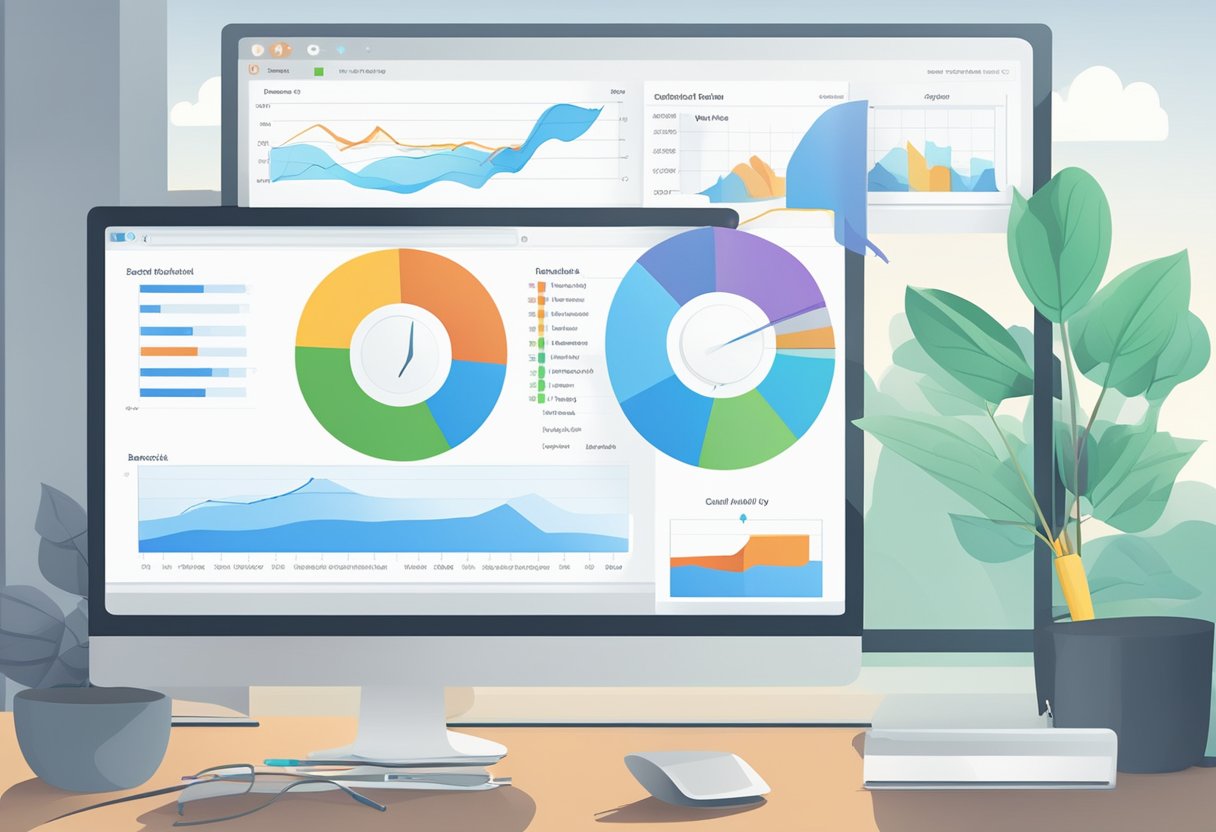Effective link building strategies are the cornerstone of enhancing a website’s search engine optimisation (SEO) and overall digital visibility. At its most fundamental level, link building involves acquiring hyperlinks from other websites to your own. These links serve as pathways for users to navigate between pages on the internet, and importantly, they also enable search engines to crawl the web and rank websites accordingly. With the digital landscape becoming increasingly competitive, effective link building can give your site the edge it needs to stand out.
To embark on a successful link-building campaign, it is essential to comprehend the multi-faceted approach required. This involves not only the creation of compelling content that naturally attracts links but also proactive efforts such as outreach and the establishment of meaningful digital relationships. The technical elements of link building cannot be overlooked either, as the structure of URLs and adherence to ethical practices play a significant role in the longevity and effectiveness of the links acquired.
Key Takeaways
- Link building is essential for improving SEO and web visibility.
- A strategic approach to link building incorporates content creation and relationship development.
- Technical and ethical considerations are fundamental to sustainable link building.
Understanding the Basics of Link Building
In the realm of Search Engine Optimisation (SEO), link building is the tactical process of acquiring hyperlinks from external websites to one’s own site. These hyperlinks, simply known as links, are crucial for SEO because search engines such as Google utilise them to discover new web pages and determine how well a page should rank in their results.
How Link Building Works:
- Search engines crawl the web using links to go from one site to another, forming an intricate map of relationships between websites.
- When a website has a high number of quality links pointing to it, search engines interpret this as a signal of the site’s credibility and authority, which can improve its ranking.
Types of Links:
- Natural Links: These occur when other site owners link to your content because they find it valuable, without any direct action from you.
- Manually Built Links: Acquired through deliberate link-building activities, like asking influencers to share your content or customers to link to your site.
- Self-Created Links: Added to a blog comment, online directory, or forum with optimised anchor text, but they are typically less valuable and can sometimes be perceived as spammy by search engines.
Effective link building is not just about quantity but also the quality of links. Search engines evaluate:
- The linking site’s popularity, trustworthiness, and authority.
- The relevance of the content between the source page and the target page.
- The anchor text used in the link, as it should provide context and be keyword-rich without being overly optimised.
For SEO success, it’s essential to focus on building high-quality links that bring genuine value to users. One can explore 11 effective link building strategies or dive into a more detailed beginner’s guide to learn practical and ethical approaches to enhance their link profile.
Drive unparalleled digital success with Flow20. Enhance your eCommerce SEO with our expertise, leverage Bing PPC services, and conquer Google Ads. Don’t miss our Google Ads training to sharpen your skills. Click to start now!
Developing a Link Building Strategy
In crafting a successful link building strategy, it’s essential to assess existing links, clearly define objectives, and carefully select potential outreach targets.
Evaluating Your Current Link Profile
Every strategy begins with understanding one’s starting point. Website owners should conduct a thorough audit of their current link profile. This assessment includes analysing the number of existing backlinks, the quality of these links, and the diversity of link sources. Tools like Moz’s Link Explorer or Ahrefs can be instrumental in painting a clear picture of a website’s current link landscape.
Setting Link Building Goals
Setting tangible and measureable goals is fundamental to the process. Goals can range from increasing the number of high-quality backlinks to enhancing the site’s authority in a particular niche. Each objective should be SMART: Specific, Measurable, Achievable, Relevant, and Time-bound. Whether it’s aiming for a specific number of links or reaching a desired domain authority score, clear goals help steer the effort in the right direction.
Identifying Target Sites for Outreach
The final step in developing a strategy is identifying which sites to approach for link building. Seeking out reputable sites that are relevant to one’s niche is crucial. One should compose a list of potential sites with high domain authority that are more likely to contribute positively to SEO efforts. Using the Skyscraper Technique, one can target these sites with better content propositions, aiming to secure valuable backlinks. A strategic approach, coupled with personalised outreach emails, greatly increases the chances of a favourable response.
Content Creation and Promotion
Content creation and promotion are pivotal for propelling a site’s linkability. Crafted with a purpose and promoted assertively, content can act as a beacon for acquiring high-quality backlinks.
Crafting Shareable Content
One must create content that provides tangible value to its audience, whether through insightful analysis, compelling narratives, or practical solutions. It must resonate with readers, prompting them to share naturally. For instance, Backlinko highlights broken link building as a favoured strategy, which hinges on creating content worthy of replacing dead links.
Using Content as a Link Magnet
The content should serve as a connection point for the industry. SEO-focused pieces, such as a detailed how-to guide or a comprehensive industry report, can position a website as an authority, encouraging other sites to link back as a resource. Search Engine Journal emphasises the role of content marketing techniques in link acquisition.
Promoting Content Through Social Media
Effective use of social media can greatly enhance a content’s visibility and encourage backlinks. Platforms like Twitter, LinkedIn, or industry-specific forums can amplify reach. Consistent engagement and interaction with one’s community help bolster a content’s prominence and propensity to be linked to, as suggested by SEO practices from Whitehat SEO.
Building Relationships for Link Development

Building strong relationships in the digital space can lead to significant opportunities for link development. These connections are invaluable for sustainable SEO success.
Engaging with Industry Influencers
Engaging with industry influencers can lead to link development through shared content and endorsements. One should identify relevant influencers in their niche and proactively reach out to them, with the aim of forming a mutually beneficial relationship. Personalised communication and offering something of value can help in making meaningful connections.
Utilising Guest Blogging Opportunities
Guest blogging remains an effective way to obtain backlinks. Businesses should seek out blogs that resonate with their audience and offer to supply high-quality, relevant content. This strategy not only provides a platform to share expertise but also helps in acquiring editorial backlinks from respected websites within one’s industry.
Leveraging Online Communities
Online communities present a plethora of link building opportunities. One should actively participate in forums, social media groups, or platforms like Quora to build visibility. By contributing helpful answers and becoming a recognised member, one can organically promote their content and earn valuable links.
Technical Aspects of Link Building
In the realm of search engine optimisation, understanding the technical aspects of link building can significantly enhance a website’s visibility and ranking. Each component requires meticulous attention to detail to adhere to best practices and avoid penalties.
Understanding Follow Vs. No-Follow
In link building, it is crucial to discern between ‘follow’ and ‘no-follow’ links. ‘Follow’ links, also known simply as ‘do-follow’, are those that carry SEO value from the originating site to the destination site, signalling search engines to consider the link for page ranking. Contrarily, ‘no-follow’ links include a rel=”nofollow” attribute that tells search engines to disregard the link in ranking calculations. They are often used for user-generated content or paid links to prevent the transmission of PageRank.
Anchor Text Optimisation
The visible, clickable text in a hyperlink, known as anchor text, should be optimised for relevance and diversity. Optimised anchor text accurately describes the linked content and includes pertinent keywords that help search engines understand the context. For example, using the phrase “effective link building strategies” as anchor text informs search engines that the linked page is about that specific topic, which can aid in improving page ranking for those keywords.
Avoiding Spammy Practices
Search engines penalise websites that engage in spammy link building tactics because they violate search engine guidelines. Reliable link building avoids such practices as buying links, participating in link farms, or using automated programs to create links. Instead, focus on acquiring quality backlinks from reputable and contextually relevant sources to prevent the risk of incurring search engine penalties.
Link Building Tactics
To succeed in SEO, one must employ strategic link building tactics. These techniques are crucial in earning valuable backlinks, which are a cornerstone of search engine rankings.
Harnessing Broken Link Building
Broken link building involves finding dead links on websites within one’s niche and reaching out to the webmaster to suggest a replacement link—ideally, one pointing to relevant content on one’s own site. This method not only aids webmasters in maintaining a user-friendly site but also serves as an opportunity for gaining backlinks.
Backlink Analysis of Competitors
Conducting a thorough backlink analysis of competitors can shed light on their strategies and identify link opportunities. By understanding where competitors have acquired their backlinks, businesses can target similar sources and potentially capitalise on the same authority-boosting benefits.
Using Infographics for Backlinks
Infographics are a compelling way to distil complex information into visual, shareable content that can earn backlinks. Tailoring content that is not only informative but also aesthetically pleasing increases the likelihood that it will be shared by other sites, thereby gathering backlinks and boosting SEO performance.
Monitoring and Maintaining Your Backlink Profile

Effective SEO strategy demands not only the acquisition of backlinks but also a vigilant approach to both monitoring and maintaining a healthy backlink profile.
Regularly Auditing Backlinks
Regular audits provide a clear depiction of the backlink profile’s health and composition. Utilising tools like Ahrefs, one can ascertain the total number of backlinks and evaluate their quality to ensure they align with search engine guidelines.
Disavowing Toxic Links
Disavowing harmful links is crucial when they are identified. Services such as Google’s Disavow Tool enable webmasters to communicate with search engines about the links they do not want to be associated with, protecting their site’s credibility.
Tracking Link Building Progress
Tracking advancements validates the effectiveness of link-building campaigns. One should monitor metrics like referring domains and the evolution of their link profile to make informed adjustments to their strategies and focus on what yields the best results.
Maximize your law or finance firm’s potential with Flow20! Our specialized SEO for law, SEO for finance, and PPC for law services are designed to elevate your online presence. Click here to start dominating your industry today!
Leveraging Local SEO for Link Building
When it comes to enhancing your website’s visibility in a regional context, incorporating local SEO strategies into your link-building efforts is paramount.
Optimising for Local Search
The first step in leveraging local SEO is to ensure your site is optimised for local search. This involves consistent NAP (Name, Address, Phone Number) citations across your web presence and accurate location data on your site. Additionally, creating locally relevant content can significantly boost local search performance.
Building Links with Local Partners
Establishing connections with local businesses and engaging in mutually beneficial partnerships is a smart way to build localised links. For instance, collaborative events, shared promotions, or guest blog exchanges can result in high-quality, geo-targeted backlinks. This approach not only improves your SEO but also reinforces local community ties.
Participating in Local Community Events
Active participation in local community events provides a dual benefit of engaging with your audience while earning valuable local backlinks. Hosting or sponsoring local events can attract attention and links from local news outlets, community calendars, and event directories, translating to increased local online visibility.
Adapting to Algorithm Updates

Search engine algorithms are continuously evolving, necessitating the need for SEO practitioners to remain vigilant. Regular monitoring of industry news and updates from search engines equips one with the knowledge needed to make informed adjustments to their link building strategies.
Key strategies include:
- Monitoring metrics: Keeping an eye on website analytics can provide early indications of the impact of an algorithm update. Sharp changes in traffic or rankings may necessitate a strategy review.
- Diversifying link sources: A broad range of high-quality backlinks can mitigate the risk of negative impacts from algorithm changes. It is wise to acquire links from a mix of authoritative sources.
- Prioritising content quality: High-quality, relevant content naturally attracts backlinks and is generally favoured by search engines. This approach encourages sustainable link building that withstands algorithmic shifts.
Adaptation Tactics:
- Forensic analysis: After an update, conducting a thorough examination of any ranking shake-ups can pinpoint potential areas for improvement.
- Competitive analysis: Observing the performance of competitors’ link profiles may reveal successful adaptation strategies.
- Technical SEO: Regular audits to ensure a website’s technical SEO aligns with the latest best practices can help to maintain link equity and search visibility.
Understanding the dynamic nature of Google’s algorithm underscores the importance of adaptability in link building. SEO professionals must approach algorithm updates as an opportunity for refinement rather than a setback, ensuring long-term success in the ever-changing digital landscape.
Legal and Ethical Considerations in Link Building

When undertaking link building, one must navigate both legal and ethical landscapes to maintain the integrity of a website’s SEO strategy. Legal considerations often relate to avoiding practices that might be deceptive or manipulative, such as the purchasing of links, which can result not only in SEO penalties but also potential legal consequences.
Ethical concerns in link building involve a commitment to honesty and transparency. One should focus on earning links through merit (such as the production of quality content) rather than resorting to underhanded techniques. Here are some key guidelines to consider:
- Transparency:
- Disclose any partnerships or affiliations that lead to a backlink.
- Avoid hidden links or any form that can be considered sneaky by search engine guidelines.
- Value Proposition:
- Ensure that the content linked to adds value to the user and is relevant to the context.
- Authenticity:
- Build natural relationships with other website owners and creators.
- Do not employ automated tools to generate links en masse.
- Quality over Quantity:
- It’s important to prioritise high-quality backlinks from authoritative sources, as outlined by guidelines on effective strategies for link building for law firms.
- Legal Compliance:
- Familiarise oneself with the Webmaster Guidelines provided by search engines like Google, to avoid penalisation.
Adhering to these principles not only avoids short-term pitfalls but also establishes a sustainable, reputable online presence that can withstand algorithm updates and industry scrutiny.
Measuring the Success of Your Link Building Efforts
Effective link building is pivotal to SEO, and measuring its success involves tracking specific indicators and interpreting data accurately. Knowing how to evaluate your strategies ensures that your efforts are not in vain.
Key Performance Indicators (KPIs)
One measures the success of link building by assessing various Key Performance Indicators (KPIs). These generally include the number of acquired backlinks, the quality of the linking domains, and improvements in search engine rankings. It is also important to measure the diversity of link sources and the growth rate in referring domains. Consistent monitoring of these KPIs can signal the strength and effectiveness of your link building strategies.
Using Analytics Tools Effectively
Leveraging analytics tools is crucial to accurately assess link building success. Tools like Google Analytics and Ahrefs provide insights into traffic trends, backlink profiles, and website rankings. They can effectively track increases in organic traffic and high-quality backlinks. Regularly reviewing these metrics with the right tools empowers marketers to adjust their link building strategies dynamically.
Interpreting Link Building ROI
The return on investment (ROI) from link building depends on an intersection of various factors, including increased site authority, traffic, and conversion rates. To gauge the ROI, one must consider the value of each new visitor and the subsequent conversion potential compared to the investment made in obtaining new backlinks. Analysing these elements allows for a concrete understanding of how link building efforts translate into tangible business outcomes.
Frequently Asked Questions
Link building is an integral aspect of Search Engine Optimisation (SEO) and digital marketing. The following are some of the most common queries regarding effective strategies for link building.
What are the best practices for creating a successful backlink strategy?
A successful backlink strategy hinges on creating high-quality, relevant content that provides value to users. This should be coupled with research into competitor links and the strategic placement of backlinks in authoritative websites.
How can one identify and leverage broken link building opportunities?
Identifying broken link building opportunities involves finding external links on websites that no longer lead to active pages. One can leverage this strategy by suggesting replacement content that the website owner can link to instead, thus providing mutual benefit.
Why is link building considered a vital component of digital marketing for SEO?
Link building is considered vital because it significantly affects a website’s ranking and visibility on search engines. Search engines use links as indicators of content quality, hence, a site with a robust link profile will likely rank higher than its competitors.
What types of link building techniques are most favoured by search engines?
Search engines favour link building techniques that come from reputable, high-authority sites. Techniques such as guest blogging and creating evergreen content that naturally attracts backlinks are particularly effective.
How does one effectively measure the success of link building efforts?
The success of link building can be measured using various metrics like the increase in referral traffic, improvements in search rankings, and the growth in domain authority. Monitoring the quality and relevance of incoming links is also crucial.
What are the key rules to follow for sustainable and effective link building?
Sustainable link building requires adherence to search engine guidelines, focusing on quality rather than quantity, and ensuring relevance to the linked content. Ensuring links are built ethically and organically over time will lead to more effective and lasting SEO results.
Looking for a digital marketing agency that can help drive leads and sales? Check out Flow20’s service for SEO, Pay Per Click (PPC), LinkedIn Ads and more…..




